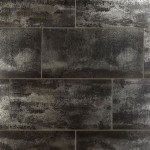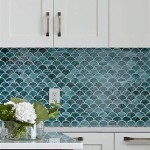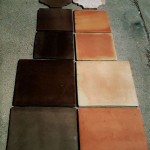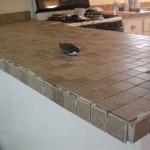Can You Install Tile Without Cement Board?
Installing tile is a popular way to enhance the look and durability of floors, walls, and countertops. Traditionally, cement board is considered a crucial component of tile installation, providing a stable and moisture-resistant base for the tiles. However, some situations may arise where installing tile without cement board becomes an option. This article discusses the feasibility of installing tile without cement board, outlining the advantages and disadvantages of this approach.
Advantages of Installing Tile Without Cement Board
While cement board typically provides a robust foundation for tile, some instances may justify omitting it. These advantages include:
- Cost Savings: Cement board can significantly add to the overall cost of a tile project. Eliminating it can reduce material expenses, making the project more budget-friendly.
- Reduced Thickness: Cement board adds thickness to the substrate, which can be problematic in areas with limited space, such as tight corners or doorways. Installing tile directly onto the existing surface can maintain the desired thickness.
- Ease of Installation: Installing tile directly onto a surface can simplify the installation process, eliminating the need for additional layers and fasteners.
It is important to note that these advantages are only relevant in specific situations. Before deciding to install tile without cement board, it is crucial to carefully assess the existing substrate and ensure it meets the necessary criteria.
Disadvantages of Installing Tile Without Cement Board
While skipping cement board might seem appealing, it can lead to several drawbacks:
- Reduced Durability: Cement board provides structural reinforcement and a moisture-resistant barrier, protecting the substrate from water damage. Omitting it can compromise the tile's longevity and increase susceptibility to cracking or delamination.
- Limited Substrate Compatibility: Not all surfaces are suitable for direct tile installation. Cement board is necessary for substrates that are prone to movement, moisture absorption, or unevenness, such as drywall, plywood, or concrete.
- Increased Risk of Tile Failure: Installing tile directly on a weak or unsuitable substrate can lead to tile cracking, loose tiles, and grout failure. This can require costly repairs or replacement.
Considerations for Installing Tiles Without Cement Board
Before attempting to install tile without cement board, carefully consider the following factors:
- Substrate Condition: The existing substrate must be strong, level, and free from cracks or movement. It should also be suitable for direct tile installation.
- Moisture Resistance: If the substrate is exposed to moisture, using cement board is highly recommended to prevent water damage and mold growth.
- Tile Type: Certain tile types, such as porcelain or ceramic, are more prone to cracking when installed without cement board. Consider using more flexible tile options if omitting cement board.
- Project Scope: For large or high-traffic areas, cement board is generally preferred for added durability and stability.
In situations where the existing substrate meets all the necessary criteria, and the project scope is limited, installing tile without cement board might be a viable option. However, it's important to carefully evaluate the potential risks and consult with a professional to determine the best course of action.

Installing Porcelain Tile In The Laundry Room Young House Love
:max_bytes(150000):strip_icc()/can-you-install-tile-directly-on-concrete-1822600-04-458f7bb6c78348c1835cf8054ef36553.jpg?strip=all)
How To Install Tile Over Concrete

Thinset Under Cement Board Yes Or No Ord Ceramic Tile

Easily Install Cement Board To Prep For Tile Installation

Installing Porcelain Tile In The Laundry Room Young House Love

How To Install A Tile Floor The Home Depot

Installing Cement Board In The Bathroom Angie S Roost

Tile Installation Backer Board Around A Bathtub Family Handyman

How To Install Cement Board On A Floor Diy Family Handyman

Installing Cement Board In The Bathroom Angie S Roost
Related Posts








